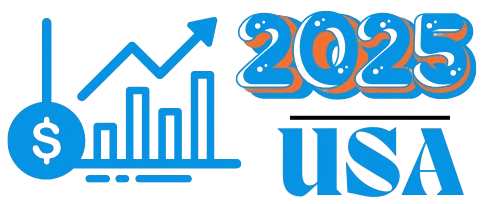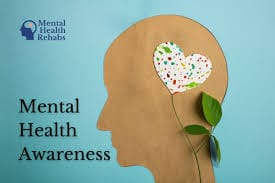In today’s fast-paced world, understanding and mastering the art of making connections is more important than ever. Whether you’re navigating the complexities of professional networking, enhancing your personal relationships, or optimizing systems in the world of technology, connections hint can be a valuable tool in your arsenal. But what exactly is connections hint, and how can it be applied across different areas of life? In this article, we’ll explore the meaning of connections hint, its significance in various domains, and how you can leverage it for success.
What is “Connections Hint”?
At its core, connections hint refers to subtle cues or signals that indicate potential opportunities or links between people, systems, or ideas. It often appears in the form of non-verbal communication, such as body language, tone of voice, or even technological indicators that suggest relationships or interactions that might otherwise go unnoticed. In a broader sense, connections hint can be a signal pointing to the possibility of establishing or strengthening a connection, whether in social, professional, or technological contexts.
The term is used widely in fields such as business networking, personal relationships, and even technology. For instance, in the realm of social media, connections hint can appear as recommendations or mutual interests, helping individuals identify potential contacts or groups with whom they might have shared goals. In professional environments, connections hint could come in the form of behavioral signals—like a colleague offering assistance or making a comment that could open up new business opportunities. It’s the invisible thread that ties people and processes together.
Furthermore, connections hint isn’t always obvious. Sometimes, it’s about recognizing the small, often overlooked details—an invitation, a shared interest, or a gentle nudge that leads to a broader collaboration. This concept is important because it allows individuals and organizations to be more mindful of the cues they send out and receive. Whether you’re looking to make new friends, grow your career, or streamline processes in a business, understanding and utilizing connections hint effectively can make all the difference.
The Role of Connections Hint in Technology

In the world of technology, connections hint plays a significant role in optimizing systems, improving connectivity, and enhancing user experiences. In networking, for example, connections hint can be applied to devices or networks to streamline communication. These hints can improve data transmission speeds, reduce latency, and enhance the efficiency of connections between devices in a network.
One area where connections hint is particularly effective is in databases. By providing hints about how data should be queried or which connections are most relevant, connections hint allows systems to prioritize the most efficient paths for data retrieval. This is crucial for systems that handle large amounts of data or rely on cloud computing. For example, cloud services can use connections hint to identify and recommend the fastest or most secure servers based on user preferences, previous interactions, or the type of data being processed.
In addition to improving efficiency, connections hint in technology can help optimize resources. With advancements like the Internet of Things (IoT), devices are constantly interacting with each other. By recognizing connections hint, systems can make smarter decisions about which devices to connect to, when to perform updates, or how to route information based on the quality of the connection. This can reduce energy consumption, improve network reliability, and make the overall system more scalable.
The best practices for utilizing connections hint in tech-related projects often involve leveraging machine learning and AI. These technologies can predict the best times to make certain connections and suggest actions to enhance performance. As more devices and systems become interconnected, the use of connections hint will only continue to grow, making it a critical factor in the ongoing evolution of technology.
The Significance of Connections Hint in Social and Professional Relationships
Connections hint isn’t just a concept used in technology; it’s also vital in both social and professional settings. In personal relationships, connections hint manifests in subtle ways, such as body language, facial expressions, or even the tone of a message. These cues are important because they help individuals gauge the emotional state or intentions of others. Recognizing and interpreting connections hint can help strengthen relationships, improve communication, and foster trust between people.
In social media, connections hint plays a prominent role. Platforms like Facebook, LinkedIn, and Instagram use algorithms to suggest potential connections, based on mutual friends, shared interests, and past interactions. These suggestions, which are often presented as “People You May Know” or “Follow Recommendations,” are essentially connections hints that guide users toward individuals or groups they might not have otherwise encountered. In this way, social media helps people expand their networks and build relationships by offering suggestions that are personalized and relevant.
Professionally, connections hint is equally important. Networking is a key factor in career advancement, and understanding the subtle cues within professional environments can unlock valuable opportunities. For example, a colleague’s casual mention of a project could hint at an opening for collaboration, or an offer of help might point to a future business opportunity. These hints are often overlooked in the hustle and bustle of daily work, but learning to pick up on them can significantly impact one’s professional trajectory.
In business, connections hint is an essential tool for navigating corporate cultures. By recognizing the dynamics at play—whether it’s a shared interest, a project deadline, or an invitation to a meeting—employees can position themselves to align with team goals, gain visibility, and develop meaningful connections that may lead to career growth.
Psychological Aspects of Connections Hint

The human mind is wired to recognize patterns, and connections hint taps into this innate ability. Non-verbal cues, such as gestures, facial expressions, and body posture, all contribute to how we perceive potential connections. These psychological aspects of connections hint are integral to building trust, rapport, and empathy in relationships.
Psychologists often highlight the importance of emotional intelligence (EQ) when it comes to interpreting connections hint. Those with high EQ are better equipped to understand the feelings and needs of others, and as a result, they are more likely to recognize and act on connections hint. For example, someone who can detect subtle changes in body language or tone of voice may be able to identify when a colleague is open to collaboration or when a customer is dissatisfied, even if they don’t explicitly say so.
In addition, connections hint plays a key role in creating emotional connections. When people feel understood, they are more likely to reciprocate and engage meaningfully. This emotional exchange builds stronger relationships, whether in friendships or professional networks. The better you are at understanding and using connections hint, the more likely you are to foster strong, supportive connections that enrich your life and career.
Furthermore, improving your ability to recognize and use connections hint can enhance your interpersonal relationships. By being mindful of others’ cues and responding appropriately, you can improve your communication skills, resolve conflicts more effectively, and create a more harmonious environment. This skill is particularly valuable in leadership, where understanding subtle hints can be the key to motivating teams and fostering a collaborative atmosphere.
Conclusion
In conclusion, connections hint is a powerful tool that can be applied across a wide range of contexts, from technology and business to personal relationships. Whether you’re looking to improve system efficiency, grow your professional network, or strengthen personal bonds, learning to recognize and utilize connections hint can lead to more meaningful and successful interactions. By paying attention to the subtle signals that guide connections, we can unlock new opportunities, foster stronger relationships, and optimize processes in various aspects of our lives.
FAQs
What is the meaning of connections hint in social media?
In social media, connections hint refers to recommendations or suggestions made by platforms to help users expand their network, based on mutual interests or connections.
How can connections hint improve communication in the workplace?
By recognizing subtle cues such as body language or tone, you can better understand the needs and intentions of your colleagues, enhancing overall communication.
Can connections hint be used to make better business decisions?
Yes, recognizing connections hint in business settings can help identify new opportunities, potential partnerships, and areas for growth.
How do non-verbal connections hint affect interpersonal relationships?
Non-verbal cues such as facial expressions, gestures, and posture help individuals understand the emotional state of others, fostering stronger and more empathetic connections.
What are some common mistakes people make when trying to understand connections hint?
Overlooking or misinterpreting subtle cues, such as ignoring body language or relying too heavily on verbal communication, can lead to missed opportunities.
How can I improve my ability to use connections hint effectively in networking?
Practice active listening, observe non-verbal cues, and be attuned to the needs and emotions of others to enhance your networking skills.
Is connections hint the same as body language or non-verbal communication?
While body language is a part of connections hint, the concept also includes other subtle cues like tone, context, and timing, which all contribute to building meaningful connections.











Hey team usabusiness2025.com,
Hope your doing well!
I just following your website and realized that despite having a good design; but it was not ranking high on any of the Search Engines (Google, Yahoo & Bing) for most of the keywords related to your business.
We can place your website on Google’s 1st page.
* Top ranking on Google search!
* Improve website clicks and views!
* Increase Your Leads, clients & Revenue!
Interested? Please provide your name, contact information, and email.
Well wishes,
Paul S
+1 (949) 313-8897
Paul S| Lets Get You Optimize
Sr SEO consultant
http://www.letsgetuoptimize.com
Phone No: +1 (949) 313-8897
your url is not getting turn on